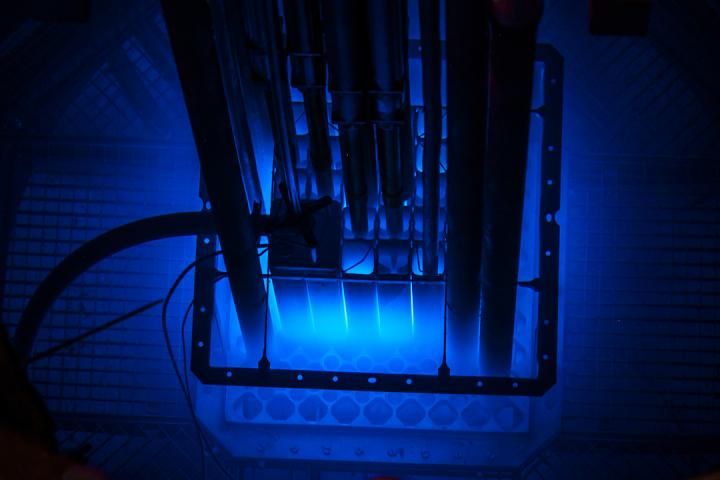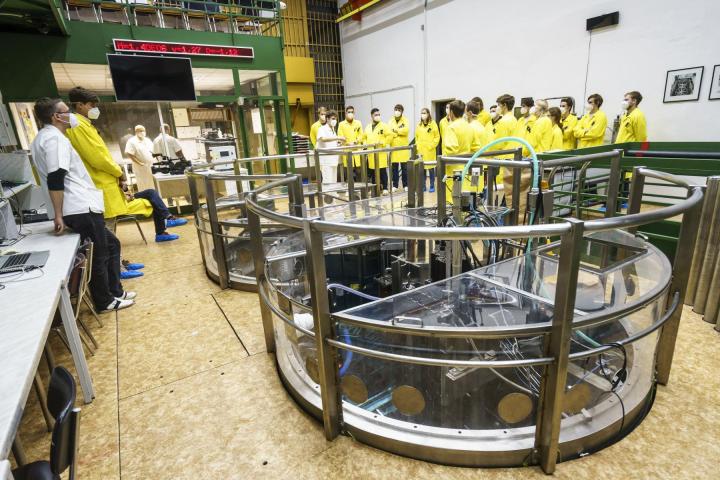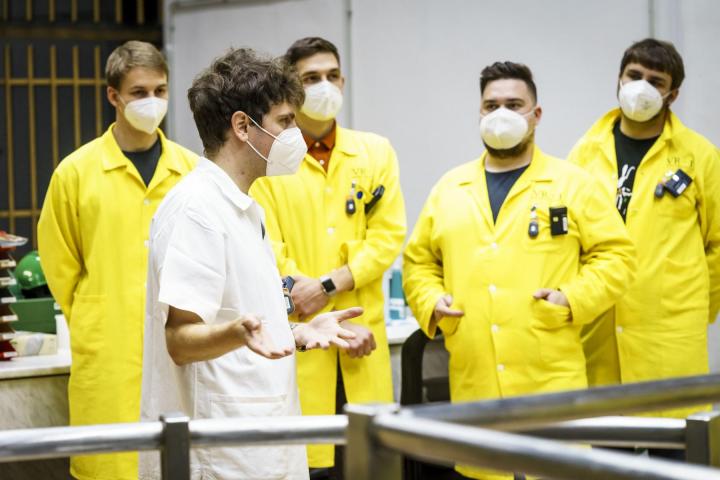
The speed of light depends on the index of refraction. Nuclear fuel produces charged particles (mostly electrons - beta decay) by the decay of radioisotopes, which have a higher speed than the speed of light in water. The normal speed of light in a vacuum is about 300 000 km/s, nevertheless in water it slows down to 226 000 km/s, with charged particles moving at higher speeds. The charged particle spreads electromagnetic waves around it - but because they are faster than light, these waves do not get in front of the particle, only behind it creating a cone of electromagnetic waves that generate that bluish glow. The analogy is the shock wave when a fighter jet flies at supersonic speeds. This phenomenon causes the surroundings of the nuclear fuel to light up blue. Since the VR-1 reactor is a zero power reactor and the fuel is still physically fresh, it is necessary to increase the reactor power to the operating maximum to make the bluish glow visible to the naked eye, while ensuring darkness in the reactor hall (therefore the evening hours). The Cherenkov radiation in a nuclear reactor is always present, only its intensity is weak and therefore cannot be observed with the naked eye.
The unique design of the school reactor VR-1 Vrabec, whose power is so small that it does not even increase the temperature of the water in the reactor and therefore it does not need any cooling, allows those present to observe the reactor with their own eyes. "In order to maximize the number of charged particles and to make the Cherenkov radiation visible to the naked eye, it is necessary to increase the power of the reactor, in the case of VR-1 Vrabec the reactor was running at about 500 watts of thermal power, and at the same time to ensure as much darkness as possible," explains Ondřej Novák from DNR. He introduced this phenomenon to the FNPE students who arrived in the evening hours. The weak glow of bluish light required as much eclipse as possible, so the lights in the reactor hall were also turned off for a while. After that, everyone could see the phenomenon with the eye, but to capture it in photographs, it was necessary to set up an exposure of up to several seconds.
The bluish glow when gamma rays pass through a liquid was first observed by Soviet physicist Pavel Alexeyevich Cherenkov in 1934. Three years later, physicists Ilya Mikhailovich Frank and Igor Yevgenevich Tamm developed a precise theory of the phenomenon based on classical electrodynamics. All three of these scientists were awarded the Nobel Prize in Physics in 1958 for this discovery and its explanation.
Cherenkov radiation is used for example for the detection of fast charged particles in Cherenkov computers at accelerators, in the detection of neutrinos and cosmic rays.
More photos you can find here.



